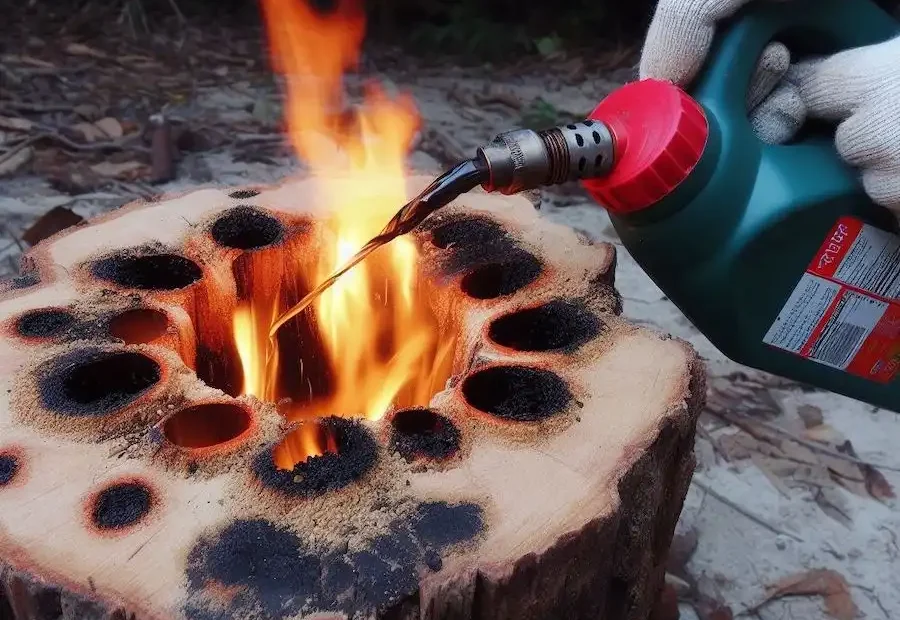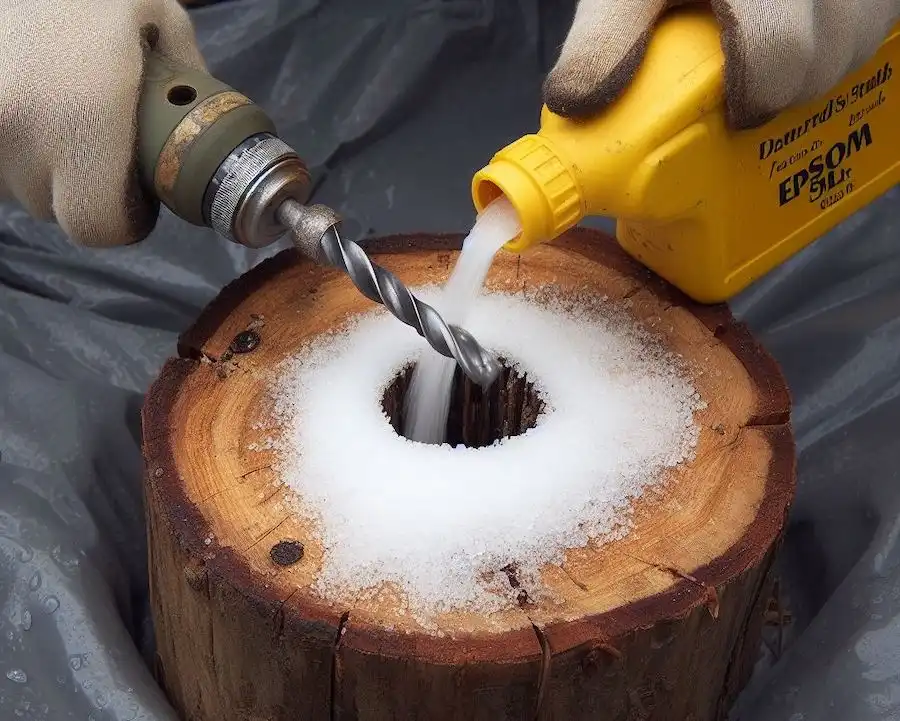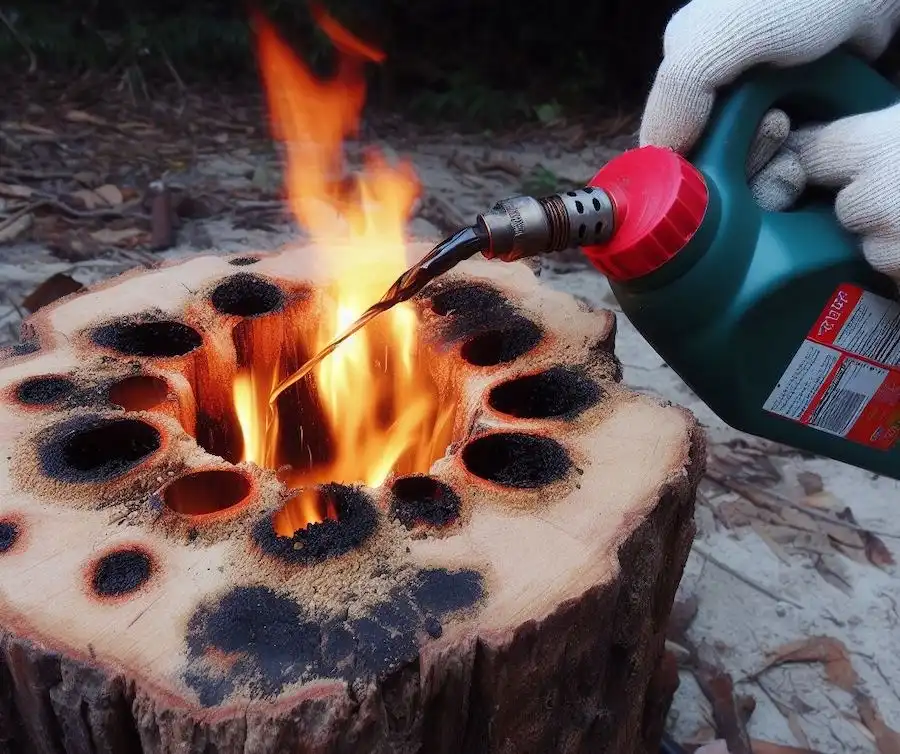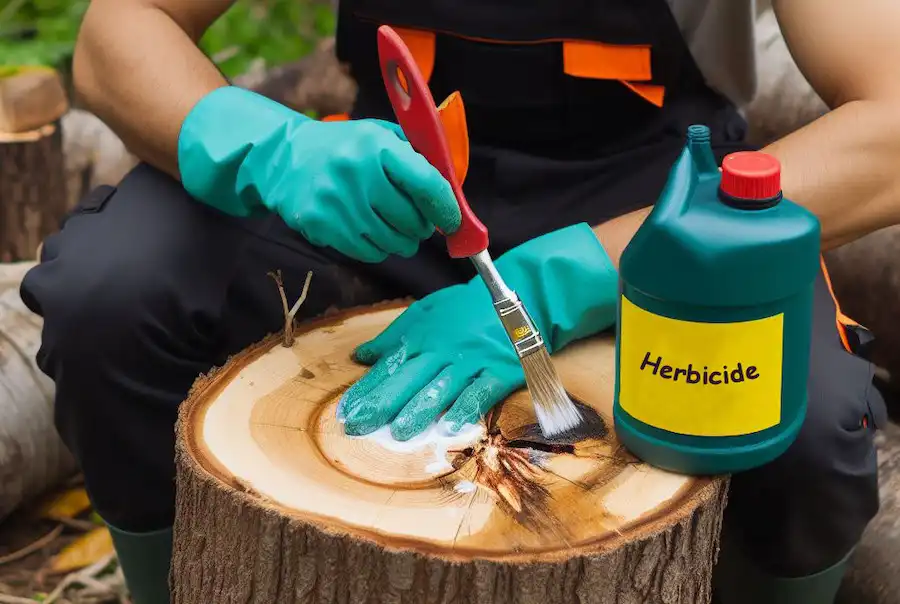
To maintain a beautiful landscape, it is sometimes necessary to remove trees including their stumps. When a tree has become unsafe, is declining, or simply needs to be cut down for other reasons, the stump is often left standing. It is important to intervene on the stump and roots to prevent regrowth and facilitate the remodeling of the area.
Here are four non-toxic approaches to removing a tree stump that encourage natural decay. These methods range from the most environmentally friendly to those with greater environmental considerations.
#1 Cover the stump
The easiest and most natural way to deal with a tree stump is to cover it. This approach is non-invasive and helps speed up the natural decay process.

To use this technique, cover the stump tightly with a waterproof, opaque sheet. This deprives the stump of light and moisture, which accelerates its breakdown. Although this method is slow (takes six to eighteen months), it is environmentally friendly and requires minimal effort.
#2 Epsom Salt Method
Another way to remove a tree stump is to use Epsom salts, which dehydrate the plant through a process called desiccation.
This method is safe for the environment and the soil. The steps include:
- Drill holes in the tree stump using a 1/2-inch drill bit.
- Fill the holes with Epsom salts and pack them tightly.
- Moisten the tree trunk without washing off the salt so that it can be better absorbed into the wood.
- Cover the tree trunk with a waterproof and light-resistant film.

With this method it usually takes a few months for the stump to become brittle and decompose.
#3 Controlled combustion
Controlled burning should be carried out with caution, preferably in less populated areas, after confirming with local authorities that it is legal.
For controlled combustion:
- Remove flammable materials from around the stump.
- Drill large, deep holes in the tree trunk.
- Carefully fill the holes with kerosene.
- After taking safety measures, light the log.
- Observe the combustion until it is complete and then dispose of the remains safely.

Keep in mind that controlled fires may be prohibited in your area and safety precautions are critical.
#4 Herbicide application
The fastest and most environmentally friendly method is to use herbicides. Choose a product designed for woody plants, such as triclopyr, and apply it carefully to avoid damage to other plants.
How to apply herbicides:
- Make new wounds in the stump if it has not been recently cut.
- Protect yourself with protective clothing and gloves.
- Gently apply the herbicide to the surface of the stump with a brush.
- Dispose of application tools safely.

The stump should absorb the herbicide and become unviable within a few days.
Remember that while herbicides provide a quick fix, they also carry the risk of environmental damage and should be used responsibly. Always follow local regulations regarding tree stump removal and consider the environmental impact of your chosen method.
